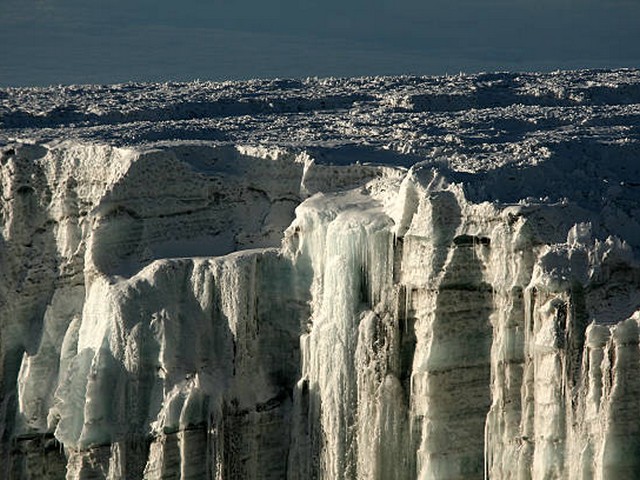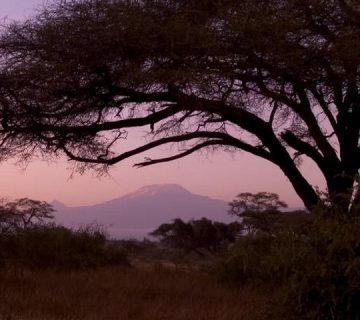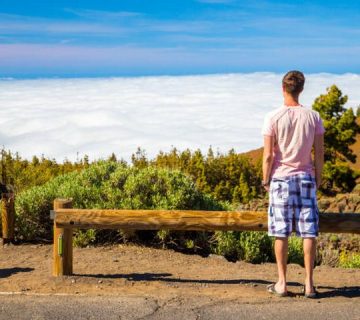What To Do If You Get Altitude Sickness On Kilimanjaro
Conquering Challenges on the Roof of Africa
Adventuring up the mighty Mount Kilimanjaro is a journey of the body and spirit, taking you through lush rainforests, alpine deserts, and finally to the icy cap where the earth meets the sky. It’s an inspiring quest, but one not without its hurdles, particularly the challenge of altitude sickness. At Kilimanjaro Centre for Trekking and Ecotourism (KCTE), we’re committed to ensuring your climb is not only memorable but also safe and informed. So, what should you do if you encounter altitude sickness on the slopes of Kilimanjaro? Dive into this guide designed to help you navigate this common climber’s quandary with ease and confidence.
Understanding Altitude Sickness
What is Altitude Sickness?
Altitude sickness, or Acute Mountain Sickness (AMS), occurs when your body cannot adjust quickly enough to the decreased oxygen levels at high elevations. Symptoms can include headache, nausea, dizziness, fatigue, and difficulty sleeping, all of which can vary from mild to severe.
Why is it a Concern on Kilimanjaro?
Mount Kilimanjaro stands proudly as one of the world’s highest freestanding mountains, with its peak, Uhuru, rising majestically to 5,895 meters (19,341 feet). The rapid ascent by most climbing routes can make climbers susceptible to AMS. Understanding and preparing for this possibility is crucial to ensuring a successful summit.
Preparing for the Altitude
Pre-Climb Health Checks
Before even setting foot on Kilimanjaro, ensure you are physically prepared. A medical check-up is advisable to assess your fitness levels and identify any underlying health issues. Booking your climb with Kilimanjaro Centre for Trekking and Ecotourism (KCTE) guarantees expert advice on all necessary preparations.
Acclimatization: Your Best Defense
Acclimatization is key. Opt for routes that allow gradual ascent and include acclimatization days. At KCTE, we recommend the Lemosho or Machame routes for their longer itineraries, giving your body time to adjust to higher altitudes, thereby reducing the risk of AMS.
Recognizing and Responding to Symptoms
Listen to Your Body
The first rule on the mountain? Listen to your body. Recognizing early symptoms of altitude sickness can help manage them before they become severe. Our KCTE guides are trained to spot these symptoms and will monitor your well-being throughout the climb.
Immediate Steps to Take
If you start feeling any symptoms of altitude sickness:
- Stop and Rest: Avoid pushing yourself too hard. Resting helps your body adjust.
- Stay Hydrated: Drink plenty of water to prevent dehydration, which can exacerbate symptoms.
- Descend if Necessary: If symptoms persist or worsen, descending to a lower altitude is often the best remedy.
The Role of a Skilled Guide
At KCTE, our guides are not only experienced climbers but also trained in first aid and altitude sickness management. They are equipped to make critical decisions that prioritize your safety and health, ensuring peace of mind as you pursue the summit.
Climbing Smart: Tips and Tricks
Pace Yourself
“Pole Pole” (slowly, slowly in Swahili) is more than just a saying on Kilimanjaro—it’s essential advice. Maintaining a slow, steady pace helps your body adapt to the altitude gradually.
Nutrition and Hydration
Fueling your body with the right nutrients and staying hydrated can help stave off the effects of altitude. Our KCTE meals are designed to provide balanced nutrition and energy for the climb.
Sleep and Recovery
Getting adequate rest is crucial. Our camps are strategically positioned to maximize your comfort and recovery, allowing your body to repair and acclimatize overnight.
When to Consider Medication
In some cases, medication like Acetazolamide can be used to prevent and reduce the symptoms of altitude sickness. Consult with your doctor pre-climb about whether this is a suitable option for you.
Engaging with a Trusted Partner
Why Choose KCTE?
Choosing the right tour operator is pivotal. At Kilimanjaro Centre for Trekking and Ecotourism, we pride ourselves on our deep commitment to safety, ecological responsibility, and providing an unforgettable Kilimanjaro experience. Our expert guides, comprehensive climb support, and safety protocols are all designed to ensure you not only reach the summit but also enjoy the journey.
Final Thoughts: Embrace the Journey
Climbing Kilimanjaro is as much about the journey as it is about reaching the summit. Understanding and preparing for the challenges of altitude is part of this incredible adventure. With the right preparation, team, and spirit, the heights of Kilimanjaro are within your reach.
Call to Action
Ready to take on the challenge? Book your Kilimanjaro adventure with Kilimanjaro Centre for Trekking and Ecotourism (KCTE) today, and stand atop Africa, healthier, safer, and inspired!
FAQ
What are the typical signs of altitude sickness?
Typical signs include headache, nausea, dizziness, tiredness, loss of appetite, and shortness of breath.
How quickly does altitude sickness happen?
Symptoms can occur within hours of ascent but often develop after spending a night at high altitude.
Can altitude sickness be prevented?
While not entirely preventable, the risk can significantly be reduced through proper acclimatization, hydration, and pacing.
Is it necessary to hire a guide for climbing Kilimanjaro?
Yes, climbing Kilimanjaro requires a licensed guide. KCTE provides experienced guides who ensure safety and enhance your climbing experience.
Embrace the challenge of Kilimanjaro with KCTE—where your adventure dreams become a safe and exhilarating reality!




